Understanding Paranormal Activity
Understanding paranormal activity is a true test of the human psyche.
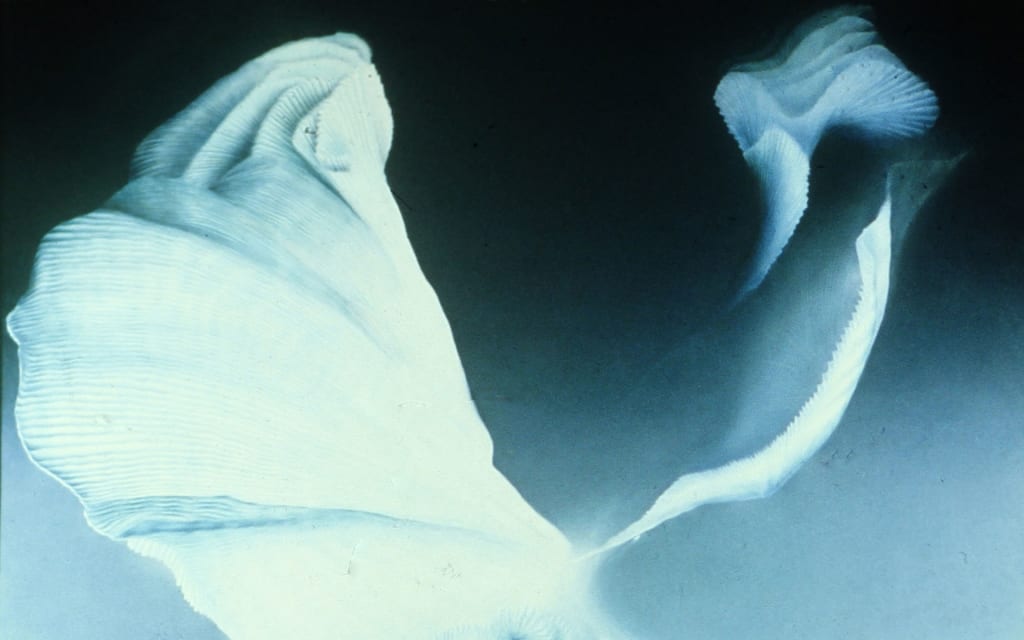
The following text is an excerpt from Lyall Watson's"Lifetides," originally published in the November 1978 issue of OMNI Magazine.
The stuff of parapsychology, super nature, and the occult is partly flotsam, thrown up to the surface of life by currents and eddies in the Lifetide, and partly jetsam, abandoned to the tide by ever more complex organisms’ intent on lightening their collective loads. Some of what is in the tide is useful and significant, and some is bound to be senseless and absurd. And in all our dealings with any of this salvage, it would be well to bear in mind Jung’s observation that “the best, just because it is the best, holds the seed of evil, and there is nothing so bad but good can come of it.” The world, by and large, is what we make of it. As a biologist, aware of the breadth and extent of life, and conscious of many of its persistent mysteries, I am grateful for any scraps of understanding. I believe that recent advances in astrophysics at one end of the scale, and molecular biology and genetics at the other, put us now in a position to make reasoned judgments about the general process of evolution that has led to our present strange, subdivided state.
I suggest that what we have in the field of paranormal phenomena are vivid and sometimes meaningful indicators of the true state of our psyche. The different physical realities of raps on tables, bent keys, flying saucers, and wandering yetis are in themselves purely incidental symbols, which may sometimes coincide in disturbing ways, but which bear no recognizable causal relationship to one another. We must not expect scattered occurrences, stray scraps of information, to carry any information of consequence. Each on its own says very little, and any attempt to wring an answer from isolated experience, or to massage meaning out of laboratory statistics, is doomed to failure. I believe there may be an almost basic cosmic rhythm, which probably underlies all coincidence, chance, seriality, and synchronicity.
I believe we will eventually succeed in laying this ghost in our machine and give it all the physical properties and parameters necessary for its establishment as a recognized force of nature. When this is accomplished, I feel certain that it will be the source of much that we now regard as supernatural.
There are human vampires. Not only in Transylvanian nightmares, but in the person of everyone of woman born. For the first nine months of our lives, we exist in what one textbook defines as a "parapiotic union between two different organisms in which not only is there intimate commingling of tissue cells of dissimilar genetic makeup, but also a chronic, covert exchange of blood." A rather long-winded way of saying 'pregnancy,' but one which effectively stresses the strange nature of the mother-fetus relationship. By all standards, the embryo is a foreign substance and ought to be rejected by the mother's immune system. She is, after all, a vertebrate with a fully functional antibody mechanism that is specifically designed to discriminate 'me' from 'not-me.' But, in some still mysterious way, nature successfully violates all the laws of transplantation, holding them in astonishing abeyance for the 270-odd days we all spend as parasites in the bodies of our maternal host. Jan Ehrenwald of the Roosevelt Hospital in New York calls pregnancy "the cradle of ESP." He suggests that the intimate physiological association of mother and fetus might extend into psychological areas, allowing their egos to merge in a way that: bridges the usual gap between individuals.
It could be significant that the uterine conditions are almost perfect for hypnotic induction. Temperature and light are virtually constant; the fetus floats at ease in the amniotic fluid, free to drift as it will; and the loudest sound around is the regular, metronomic thud of the maternal heart. Dissociation is almost inevitable and, if the little we have learned about conditions conducive to unusual perception is true, telepathy is more likely to occur in this situation than at any other time in life. There is almost no limit to the fertility of this symbiotic theory. Right away it begins to make sense of the childlike and irrational qualities of so many paranormal phenomena. Most mediumistic communications are repetitive and seem often to be almost simpleminded. Psychoanalytically they would be classed as regressive, which is exactly what can be expected if we are dealing with something that has its roots in infancy. It explains why so many so-called extrasensory perceptions are of a preconceptual, preverbal nature, and therefore almost impossible to describe. It certainly accounts for the fact that spontaneous adult telepathic experiences occur most often between mothers and young children. And it becomes easier, with the help of this model, to understand why all psychic experience is much more common in young children, who have not yet reached the stage of sharply delineating their own ego boundaries.
If a growing child, by progressively defining the edges of his own ego, smothers the possibility of telepathic communication then it is also possible that those individuals who fail to establish independent egos may remain vulnerable to continued telepathic intrusions. Most auditory hallucinations are sensed as coming from multiple voices, and when they say anything intelligible, the comments are usually anonymous and expressed in the second or third person. They are always sensed as separate from the self and out of the listener's control. There certainly is an embarrassing similarity between the paranoid schizophrenic’s delusions of persecution, his conviction that others can influence his thoughts from a distance, and the theories of those, like myself, who believe it is possible for there to be contact between minds without any normal physical agency. Perhaps schizophrenics really do hear voices. They are definitely selectively attuned to subliminal, repressed hostility in other people, but maybe there is more to it than that. There may be such a thing as 'psi pollution' for those with imperfect ego defenses.
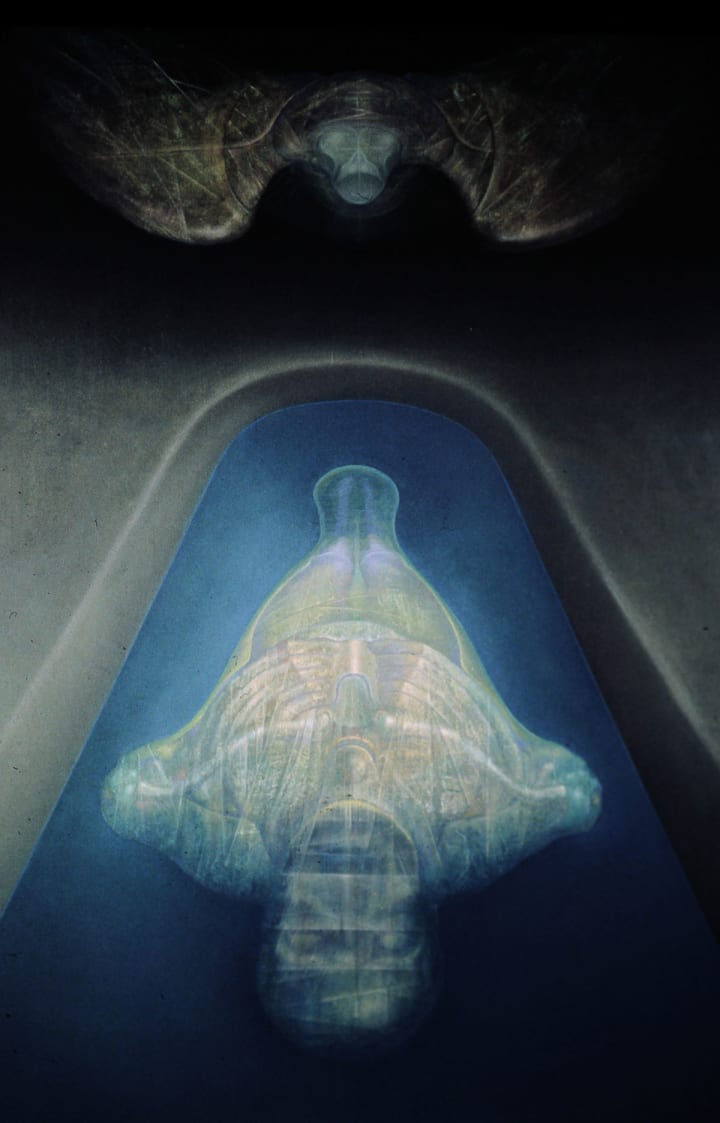
Every culture has at some time devised a way of circumventing the cerebral censor and communicating directly with the unconscious, usually by pretending that the information is coming from somewhere else, most often through some kind of scapegoat. In Tanzania, the Safwa blame a special chair, which stands still or shakes in response to questions from a sitter. The Nyoro people of Uganda use a length of wood, something like a spear shaft, called a segeto. This is moistened, usually with the blood of a freshly slaughtered goat (the unconscious thrives on that sort of vivid imagery), and the questioner grasps the shaft with his finger and thumb, running them up and down. The point where they stick indicates the oracle's answer. Among the Zande of the Upper Nile, the preferred technique is the iwa, or rubbing board, which is maneuvered over the flat surface of a special table, answering questions according to whether it slides or sticks. In Europe and the United States in the mid-19th century, turning tables was practically epidemic. Spirits were soon held to be responsible and codes were devised to communicate with them. Then, as interest in table tipping waned, the planchette came into its own. This was a miniature table, just 15 centimeters long and shaped like a heart on wheels, with a pencil fastened to it so that answers could be written down directly. And in 1892, a cabinetmaker in Baltimore patented a lettered board incorporating a small planchette-like indicator, under a process identified by the combined French and German affirmatives as oui-ja. He made a fortune.
Given these freedoms to express itself anonymously, the unconscious fairly babbles away. In St. Louis in 1913, one particular ouija board began an extraordinary monologue that only ended twenty-five years and 4,000,000 words later when its operator, a housewife called Pearl Curran, died. Proverbs, poems, and stories poured out of the board in biweekly sessions, picking up the thread each time just where the last effort ended, as though there had been no interruption. Each of the communications was signed with the name of Patience Worth, who was, by the ouija board's own admission, beginning her literary career almost three centuries after her death at the hands of hostile Indians, soon after arriving in the New World from her home in England. The content is slightly cloying, in the style that Reader's Digest likes to describe as ‘inspirational,' but it is extraordinarily consistent. There is no evidence that a Patience Worth ever existed, and suspicion must fall heavily on Pearl Curran, who found, after some years, that she was able to call out the words faster than the board could spell them. Later she graduated to transcribing directly onto a typewriter, finishing one novel set in medieval England in just 35 hours. But the psychic researcher Walter Prince, after a year spent observing the situation, concluded that it was impossible for a woman of her limited interests, education, and resources to have written even a small part of the avalanche of words and whimsy. "Either," he said, "our concept of what we call the subconscious must be radically altered, so as to include potencies of which we hitherto have had no knowledge, or else some cause operating through, but not originating in, the mind of Mrs. Curran must be acknowledged."
Now, a half century later, we know a little more about the capacity of the unconscious, which seems to be limitless. We also know that it is possible for the unconscious to be in some way directly aware of what is happening to other people beyond the reach of the senses. Charles Tart has shown that when subjects are asked to guess when a friend in a distant room is receiving a random but painful electric shock, their conscious response is totally inaccurate. But, if they are monitored for unconscious physiological response, their electroencephalographic patterns show that at the precise instant of each shock, they react as though they themselves were receiving a mild shock. Knowing this, and knowing something of the creative skill exercised by the unconscious in constructing internally consistent personalities, I see no major difficulties in the assumption that Pearl Curran could have been Patience Worth. In December 1963, Jane Roberts and her husband sat down in their apartment in Elmira, New York, to experiment with a Ouija board for the very first time. In the initial two sessions little happened, but in the third they began to get highly articulate answers to their questions. Almost immediately Jane realized that she was receiving this information in her head and could easily vocalize it without the use of the board. So began her communication with a personality that called itself Seth and that has now dictated over 5000 pages of didactic information, organized into informal lectures on subjects such as health, dreams, astral projection, reincarnation , and analytical psychology.
The presentation of all this material is lucid and highly individualistic, embodying a wide knowledge of esoteric teachings to which Jane seems to have had no normal access. Eugene Barnard of North Carolina State University explored Seth's character in sessions with Jane when she seemed to be speaking for Seth and concluded that he had been in conversation "with a personality or intelligence or what have you, whose wit, intellect, and reservoir of knowledge far exceeded my own .... In any sense in which a psychologist of the Western scientific tradition would understand the phrase, I do not believe that Jane Roberts and Seth are the same person, or the same personality, or different facets of the same personality."
I wish I could be that certain. I have a sneaking feeling that all the way through arguments of this kind we persistently underestimate the capacity and the connectedness of the unconscious. We keep on making limited either /or judgments about things. Either, we insist, the material comes directly from Pearl Curran and Jane Roberts, or Patience Worth and Seth are exactly what they claim to be–spirits from the dead. Their control of the two mediums in these cases is only temporary, but I see no reason why Patience and Seth should not be regarded in the same light as alter personalities in a multiple personality situation. In a session once with the celebrated medium Eileen Garrett, a psychologist brought Uvani, her spirit Control, into a state of confusion simply by asking what he had been doing since their last session. It seems clear that many alternative characters and spirit guides are created for roles that last only as long as they are on stage. Only when they take over completely and abolish the primary personality altogether can one begin to talk about possession. And if they persist, and become permanent, showing all manner of inappropriate behavior, can one begin to think in terms of possible reincarnation.
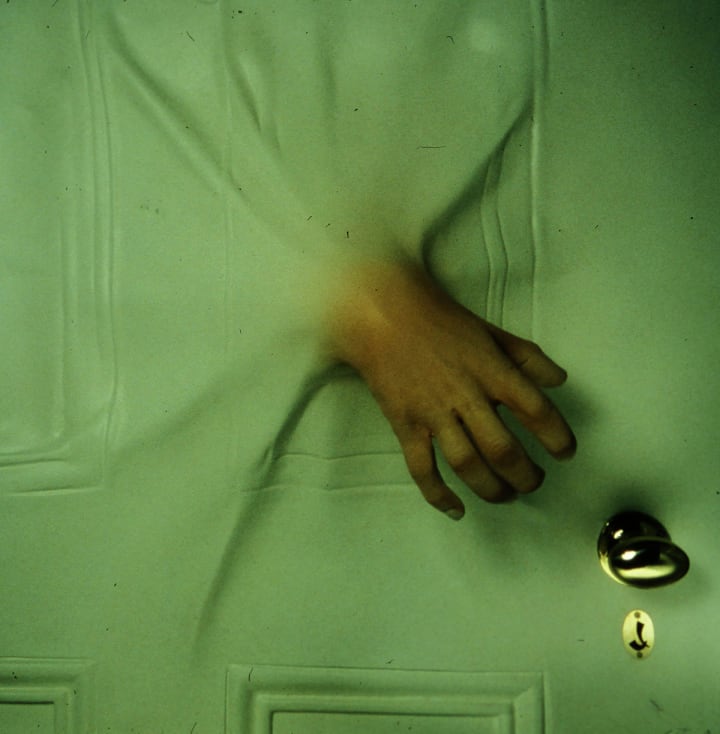
Ian Stevenson of the University of Virginia has done everything in his power to make the problem of reincarnation scientifically respectable. And now at last, after 15 years of intensive, almost single-handed, effort, he seems to be gaining some ground. The prestigious Journal of Nervous and Mental Disease devoted its entire issue of September 1977 to his work. Stevenson defines reincarnation as the survival and subsequent re-embodiment of the human personality after death and points out that personality consists of more than isolated bits of information. To make a personality, the information has to be organized into particular skills. He uses Michael Polanyi's distinction between cognitive knowledge, which is knowing about something, and tacit skill, which is knowing how to do something. Stevenson argues that we may know all the facts about a skill but can never learn to use it without actual practice. Therefore skills such as dancing, or riding a bicycle, or speaking a foreign language, are essentially incommunicable and cannot be passed without actual physical practice, from one person to another by any normal means. So his major research effort is devoted to the discovery of individuals who seem to have acquired such skills spontaneously.
Stevenson's painstaking researches have established more than 1600 cases that he describes as "suggestive of reincarnation." Most are naturally from the Indian Subcontinent, Southeast Asia, and the Middle East, where belief in reincarnation is strongest. A typical case of this type begins when a small child, usually between the ages of two and four, begins to remember living another life. Its statements about this life usually harmonize with its behavior in the sense that, if it claims to have been a wealthy person, it is likely to refuse to do menial work, no matter how poor its present family may be. The child often asks to be taken to places it remembers, and if these can be identified and the journey is made, it is usually found to have been correct in about 90 percent of its statements about the life and surroundings of the person it claims to remember. After five years of age, memories of the past life seem to fade and usually vanish altogether, along with the unusual behavior prompted by them.
A few of these cases satisfy the criteria for reincarnation in that the subjects do indeed possess not only knowledge but also special and relevant skills. A young Bengali girl produced elaborate songs and dances; an Indian boy began very early to play the classical drums or tablas with great skill; and another child showed unusual expertise with marine engines. In two cases, Stevenson even found what he calls "responsive xenoglossy," an ability to speak and respond to an apparently unlearned language. It is tempting to assume that the accomplishments of all infant prodigies could be explained in this way. Wolfgang Mozart began composing at the age of four; Johann Gauss was correcting his father's mathematics before he was three; John Stuart Mill and Baron Macauley started writing almost before they could walk. All may have been reincarnations. "Unfortunately," admits Stevenson, "to the best of my knowledge, no Western child prodigy has ever claimed to remember a previous life.”
He does, however, go on to suggest that the idea of reincarnation could have "considerable explanatory value for several features of human personality and biology that currently accepted theories do not adequately clarify." Among these he included childhood sexuality, the origin of homosexuality, early interest in unusual subjects (Schliemann declared his intention of excavating Troy before he was eight years old), rejection of parents , strange birth marks, the differences between otherwise identical twins, and even abnormal appetites during pregnancy. Stevenson himself admits that "all of the cases I have investigated so far have some flaws, many of them serious ones. Neither any single case nor all of the investigated cases together offer anything like a proof of reincarnation. They provide instead a body of evidence suggestive of reincarnation." And in dismissing the alternative explanation of some kind of assimilation through special sensitivity, he says, "To accommodate authentic cases of the reincarnation type that are rich in detailed statements and in associated unusual behavior statements and in associated unusual behavior shown by the subject, with the hypothesis of super-extrasensory perception, requires the extension of that hypothesis so that it becomes no more credible than that of survival after death."
I sympathize with his position, but I believe that this conclusion is premature. The gap between the known capacity of the brain and the demonstration of unusual skill narrows with every new discovery in the life sciences, The existence of vast untapped information in the genes; the pressure of alternative memories in the rival systems of every cell; and the growing appreciation of the powers inherent in the unconscious make it more and more reasonable to assume that even a three-year-old child could, given the right circumstances, inherit or acquire, and then organize, an elaborate second personality. The very scarcity of those with unusual knowledge or skill tends, I suggest, to support this biological explanation rather than that of reincarnation, which, given the sheer abundance of discarnate spirits that ought to be hanging around, queuing up for re-embodiment, is astonishingly rare. I think that, on present evidence, the best conclusion is that offered by Stevenson as an intermediate position. "Once considered about as well defined as an orange by its skin or a tree by its bark, human personalities now appear to be much more extensible and penetrable than they were thought to be. They can invade and be invaded by processes of extrasensory perception. They may even blend together in the manifestation of a different personality that appears to be new, but that in fact may derive from a fusion of the new arid the old."
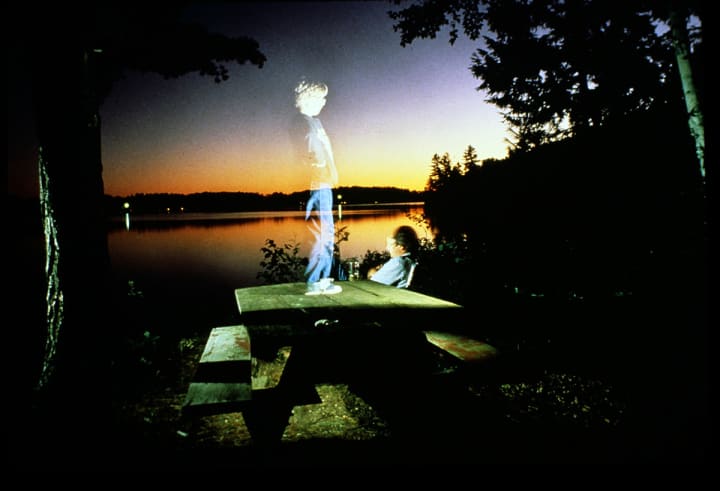
Time and time again, parapsychological research is drawn into a cul-de-sac with a wall at the end marked 'Death’ and, in one corner, a convenient escape clause in the form of a ladder on which hangs a little sign that says, 'This Way for Survival Without the Body.' Millions, perhaps even the majority of those now still alive in the world today, believe that survival is possible, and that a subsequent return in some form of reincarnation is likely. They may be right. If they are, we have in this belief a ready-made answer to almost all the remaining problems posed by apparently psychic experiences. But I am suspicious of easy answers. Possession by discarnate spirits might be possible, but I don't know. I can’t know. With our current knowledge, this concept is too complex to prove or disprove; it is too big a jump from what we know to what might or might not be. The most we can say how with any certainty is that awareness, both conscious and unconscious, seems to be determined at least in part by processes that cannot be localized in the brain and might not be physical at all.
In 1940, the 12-year-old son of a county sheriff in West Virginia was taken 192 kilometers to the Myers Memorial Hospital at Philippi for an operation. One dark, snowy night, about a week after his arrival, he heard a fluttering at the window of his hospital room. He called a nurse and told her there was a bird trying to get in. To humor the boy, she opened the window and a pigeon came right in. He immediately recognized it as his personal pet. He told the nurse to look for a ring on its leg carrying the number 167. She did, and there it was. He was allowed to keep it in a box near his bed and when his parents came to visit a few days later, they confirmed that it was indeed his bird and had been seen around the house for several days after he was admitted to the hospital. So it hadn't been brought with him, or simply followed the family car. The pigeon succeeded somehow in traveling 192 kilometers and locating the correct window, in the right building, in a strange town, at night, and in a snowstorm.
Joseph Banks Rhine and his researchers at Duke University sifted through hundreds of cases of what they called 'psi-trailing ' in animals, trying to obtain precise verification. The one that most impressed them was that of a cream-colored Persian cat called Sugar who in 1951 seems to have trailed its owners across 2400 kilometers of mountainous country between California and Oklahoma. The family intended to take the cat with them, but it was afraid of cars and leaped from the window just as they were leaving Anderson at the northern end of the Sacramento Valley. They couldn't catch him again, but 14 months later Sugar suddenly turned up, leaping through the window of their new home in Gage, Oklahoma. The cat had a deformity of the left hip that served as positive identification, easily recognizable by a veterinarian. Though how he crossed a desert, several canyons, arid the entire width of the Rocky Mountains remains a mystery. An even bigger mystery is why he should have gone to all this trouble in the first place. Why did the pigeon risk death to find the boy?
Our lack of scientific success in bringing paranormal phenomena to heel strongly suggests that these obey different laws, and can't be approached on a causal basis. So I am not going to set up the contingent system as a causal factor. I certainly don't think the answer is going to be that simple; but I do believe that the existence of an alternative adds significantly to [Arthur] Koestler's contention that we are in a state of essential tension between rival forces. This is the conflict I have called the Lifetide. And I emphasize again that the tidal metaphor is appropriate, because tides and waves are phenomena that have nothing directly to do with the water in which they become manifest.
There is an important contradiction in the apparent ease with which anyone can learn to dowse or to levitate a table, and the rarity with which such phenomena occur spontaneously. This rarity may be only apparent in that we simply don't notice dozens of strange things that occur around us every day, but even taking that possibility into account, it nevertheless seems clear that our internal filter normally exerts a very powerful two-way control. This suggests that paranormal events have limited survival value and a narrow field of applicability, which leaves us in the awkward position of having to make major assessments on the basis of fragmentary evidence. What we can see is nothing like the tip of an iceberg, which does in fact offer an excellent idea of the composition of the rest, but merely the debris left behind by a series of unsuccessful experiments. We have to operate like plastic surgeons faced with the task of resurrecting a damaged face without a photograph of the original to refer to. Perhaps the best analogy is that of the psychiatrist with a severely disturbed patient, who has to search for health in the evidence of pathology. All he has to work with is what the patient tells him. All we have to work with is what seeps past the barrier, what little the unconscious, lets slip.
You can collect as many seawater samples as you like, but none will contain, nor tell you anything about, the tide. You can dissect as many living organisms as you can lay your hands on, breaking them down into their subatomic components, and still find no answers. Life is a pattern, a movement, a syncopation of matter; something produced in counterpoint to the rhythms of contingency; a rare and wonderfully unreasonable thing.
Reported Paranormal Events
It seems that no matter what, the search for answers, the quest for proof of life after death, or even an understanding of the spiritual realm we live in is embraced by the masses. Be careful what you ask for. Often, reports of the paranormal don’t make you shudder with excitement. Casper the friendly ghost is just a cartoon.
The Pollock Twins
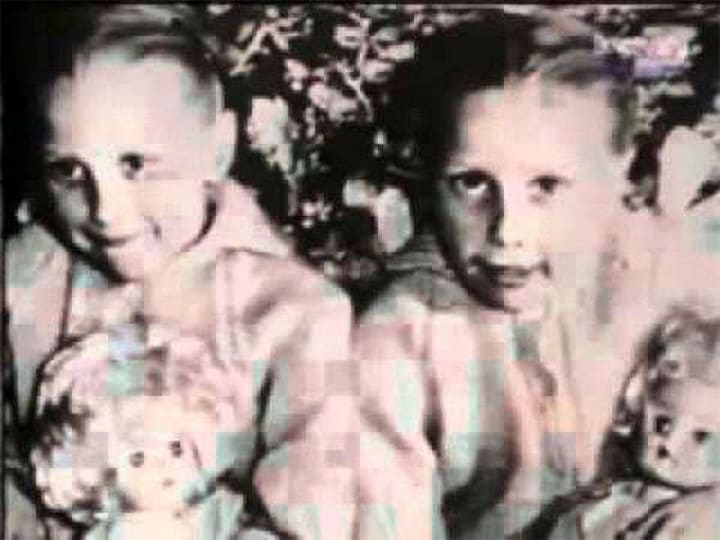
The Pollock family lost their two daughters in a tragic car accident in 1957 while they were walking on a road. The daughters were named Joanna (11) and Jacqueline (6), who were very close and left their parents in tears. However, one year later their mother gave birth to a set of twin girls who had birthmarks that resembled those of Joanna and Jacqueline. The twin girls would also request the toys that their sisters had and would insist on trips to the parks they had no knowledge of. Dr. Ian Stevenson, a psychologist, who studied these girls from 1964 to 1985, concluded that they were the reincarnation of their sisters.
The Ice Woman of Minnesota

19 year old Jean Hilliard was on her way to her parent’s home in rural northwestern Minnesota when she met a car accident which resulted in car failure. She left her car in subzero temperature and walked 2 miles to her friend’s home where she collapsed 15 feet from the door during the night time. She was found frozen solid at a temperature around -22 °F, six hours later at 7a.m in the morning. When rushed to a nearby hospital, the doctors thought that she was deceased because of no pupil response to light, body too hard to pierce with a hypodermic needle and a pulse of 12 beats per minute. But her family did not allow the doctors to send her to a morgue. She started to revive after 2 hours in an electric blanket and after 49 days Jean was discharged from the hospital with just a scar caused by frostbite.
The Dyatlov Pass Incident
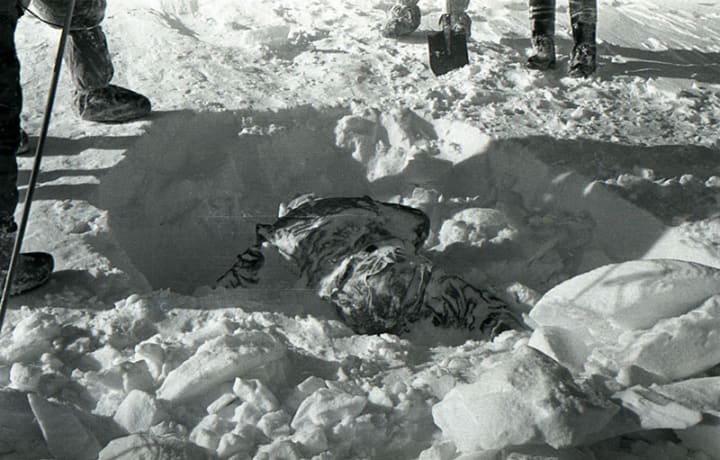
This incident is named after Igor Dyatlov, the group leader of 9 Russian hikers, who were killed in February 1959 during their hiking expedition in the northern Ural Mountains. Their bodies were found 29 days after their death which were mostly undressed and had sustained internal injuries with no signs of external stress. The autopsy report indicated radioactive traces on their bodies and their bones were crushed without any visible wounds. Dytalov had fist injuries as if he had been in a fight for his survival. Moreover, one woman’s tongue was missing. Their camps were torn inside out in an attempt to escape from an unknown threat. The Soviet investigators failed to come up with the cause of the incident and hence the final report claimed that the cause of deaths to be an “unknown compelling force”.
The Disappearance of Elisa Lam

Elisa Lam, a 21 year old Chinese-Canadian student was reported missing in February 2013 and her body was found in a water tank at the top of Cecil Hotel. Elisa’s footage that shows a strange behavior before her disappearance stormed the internet and made people think about the unknown factors that were causing her to act that way. According to the autopsy report, no signs of struggle were found on her body. She apparently moved the lid of the water tank by herself which otherwise would take more than one person to move and then she closed it. People say that her body was possessed by a spirit that caused her otherwise unexplainable death scenario.
The San Antonio Ghost Tracks
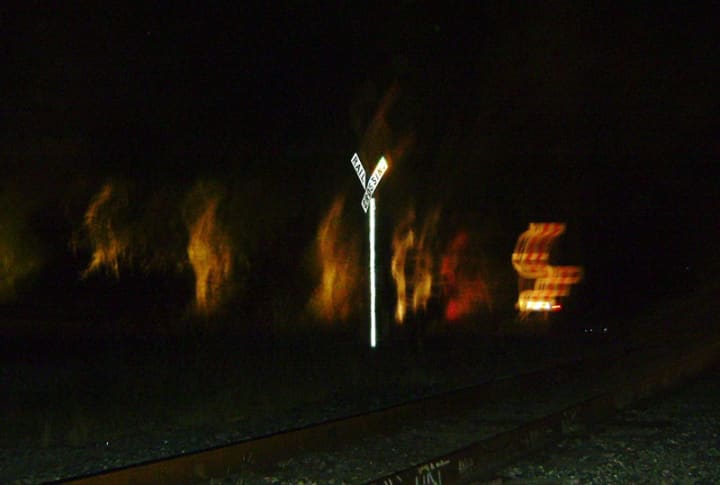
10 children and the driver were killed on San Antonio tracks when a train smashed into a school bus in late 1940’s. Since then, any car that stops on this unfortunate place is reportedly pushed out of the harm’s way by the ghosts of those deceased children. Some people have also reported the hand prints of little children on their cars after being pushed.
The Reincarnation of Biya Pathak
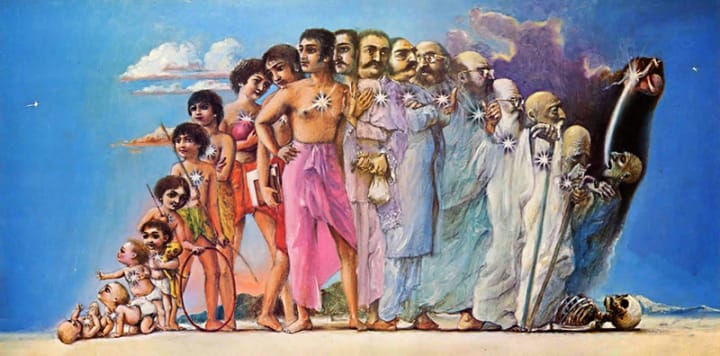
This is another Reincarnation studied and verified by Canadian-American Psychologist Dr. Ian Stevenson. Swarnlata, an Indian girl by the age of 3, started giving details about her previous life as Biya Pathak. She came under Dr. Stevenson’s observation when she was 10 and he was able to verify 50 distinct facts about a woman who had no connection with Swarnlata’s family and lived 100 miles away from their village. When Biya’s former husband contacted Swarnlata along with his sons and other family members, she was able to identify all of them by their names and even called one of her sons by his pet name “Babu”.
About the Creator
Futurism Staff
A team of space cadets making the most out of their time trapped on Earth. Help.

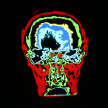




Comments
There are no comments for this story
Be the first to respond and start the conversation.